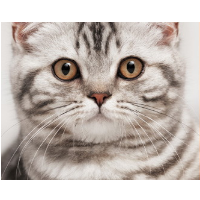Californians Sue Nestlé over Cat Food from Fish Caught by Asian Slave Labor

Responding to a New York Times article last month about the use of slave labor aboard Thailand fishing vessels, attorneys in Los Angeles filed a class-action lawsuit (pdf) in federal court on behalf of cat owners who feed Nestlé’s Fancy Feast food to their pets.
“Knowing that much of the fish sold in Nestlé’s pet food is likely the product of slave labor is material to consumers not wishing to support slave labor with their purchasing power,” the 32-page complaint claims.
The legal action follows by one week a class-action lawsuit filed against Costco Wholesale Corporation on behalf of a California woman who claims the company buys its farmed prawns from Thailand, where they are fed fish caught by slave labor on boats. “California consumers are unknowingly supporting slave labor,” that lawsuit said.
The Nestlé’s lawsuit alleges that fishing boats are manned by “desperate and vulnerable . . . men and boys who have been trafficked from nearby Myanmar and Cambodia” and “sold as slaves by brokers and smugglers to fishing captains in Thai ports. The ships are called “floating prisons.” The work is brutally dangerous.
The Times story traced fish caught at sea by a slave ship to a cannery called Songkla Canning Public Company, which is a subsidiary of Thai Union Frozen Products, Thailand’s largest seafood company. Thai Union sells millions of pounds of seafood-based products for American brands like Iams, Meow Mix and Fancy Feast. The United States is the largest customer in the world for Thai fish.
This was news to Nestlé. The Associated Press said the company, in an e-mail, didn’t deny the allegations, but said “forced labor has no place in our supply chain.” The company said it requires its suppliers to adhere to international law and forbids the use of slave labor as a matter of corporate policy. Nestlé said in a press release it was working “to identify where and why forced labor and human rights abuses may be taking place” in Thailand and Southeast Asia.
Human rights advocates say it isn’t hard to find. It’s taking place all over Southeast Asia and a report (pdf) on human trafficking by the U.S. State Department earlier in the month confirmed that notion. Nongovernmental organizations “report an increase in the number of Burmese males transiting to Thailand en route to Indonesia and Malaysia, where they are subsequently subjected to forced labor, primarily in the fishing industry,” the report said.
While evidence of slave ships is plentiful, it is not easy to trace the supply routes of their catch. Fishing ships often stay at sea for months, offloading their catch to motherships that do nothing but collect the haul from multiple sources and take it to port. The process has built-in plausible deniability.
Nestlé is something of an expert in the area of captive labor forces. In June 2012, the company was shocked to learn that child labor was used extensively in the cocoa industry and four-fifths of its considerable supply of cocoa came from sources that weren’t monitored for abuse. Nestlé uses 10% of the world’s cocoa supply and the Ivory Coast is the biggest producer. Around 89% of that nation’s children are involved in the business.
–Ken Broder
To Learn More:
Nestle Accused of Putting Fish from Slave Labor in Cat Food (by Edvard Pettersson, Bloomberg News)
"Sea Slaves": The Human Misery That Feeds Pets and Livestock (by Ian Urbina, New York Times)
Pet Food Sold in U.S. Is Produced by Slave Labor in Thailand (by Noel Brinkerhoff and Danny Biederman, AllGov)
Melanie Barber et al v. Nestlé USA Inc. (U.S. District Court Central District of California Southern Division) (pdf)
- Top Stories
- Controversies
- Where is the Money Going?
- California and the Nation
- Appointments and Resignations
- Unusual News
- Latest News
- California Forbids U.S. Immigration Agents from Pretending to be Police
- California Lawmakers Urged to Strip “Self-Dealing” Tax Board of Its Duties
- Big Oil’s Grip on California
- Santa Cruz Police See Homeland Security Betrayal in Use of Gang Roundup as Cover for Immigration Raid
- Oil Companies Face Deadline to Stop Polluting California Groundwater





